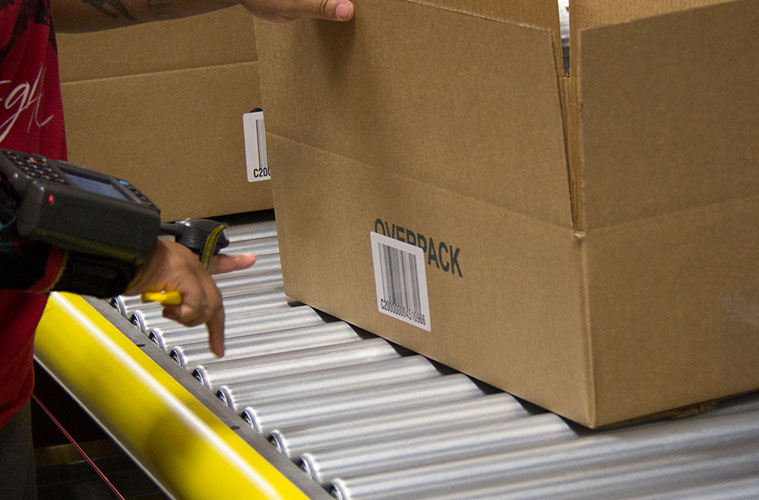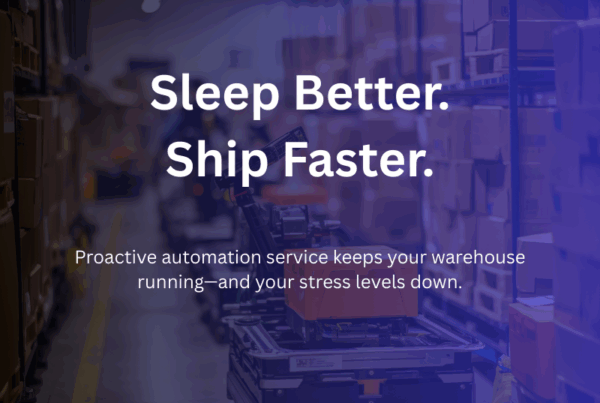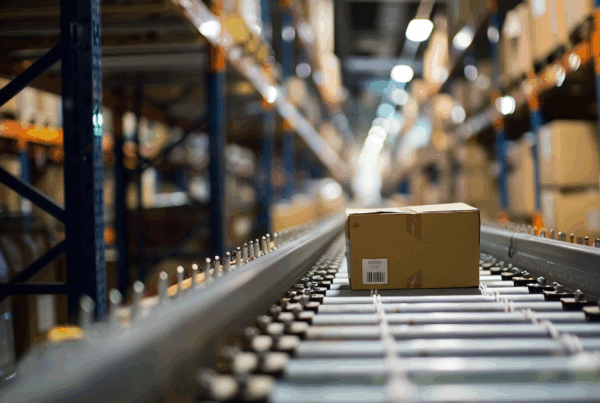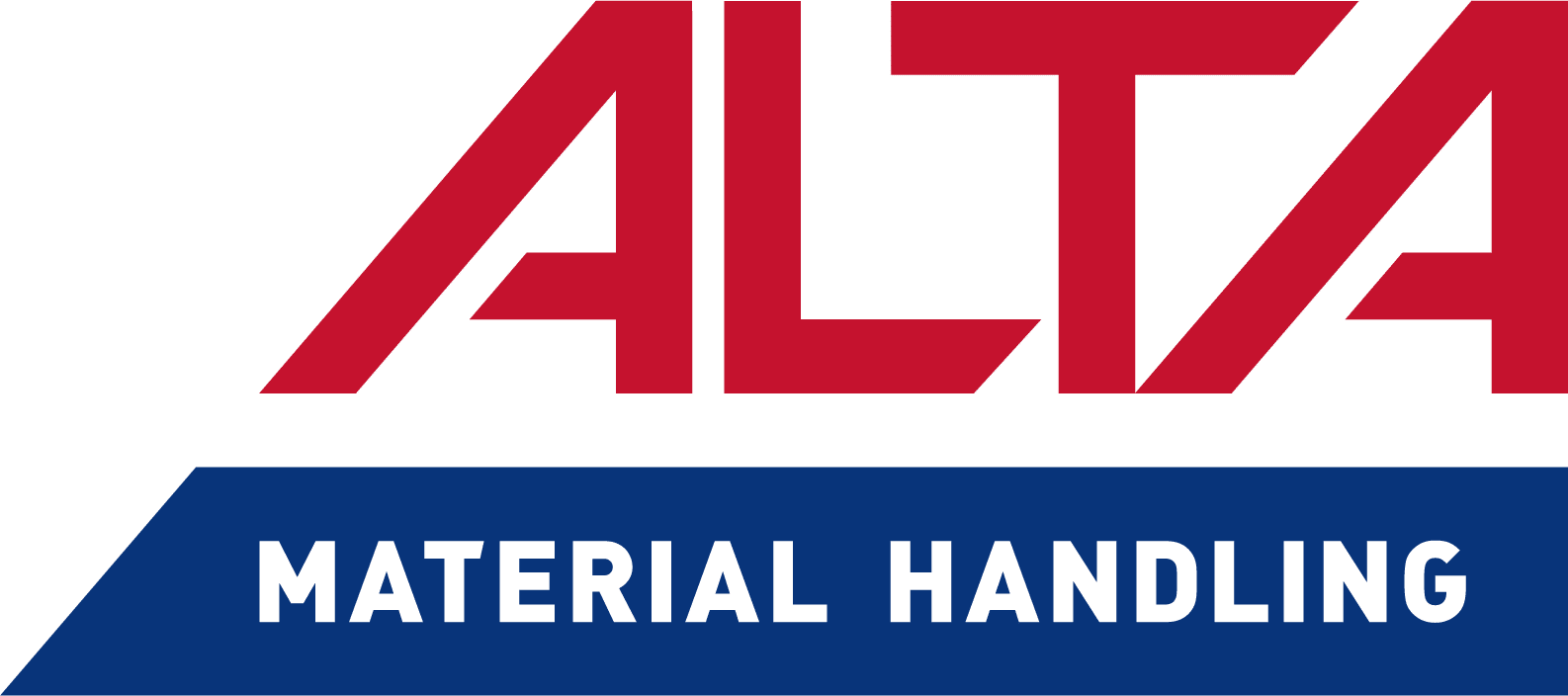Correctly implemented warehouse automation has many positive effects on distribution center operations. But first, a detailed analysis is needed to understand the financial savings generated by the investment. The project sponsor doesn’t want to discover any budgeting traps after the implementation has started.
Before deciding to automate, customers need to know: How much will it cost upfront? How much will it cost to maintain? And how much will it save over time?
These answers can be complicated. It’s more than just selecting hardware and robots. It’s finding the proper balance between the available technologies and your facility’s needs.
Understanding the innovative landscape
Today’s market is more competitive than ever, with many newly formed companies offering innovative solutions that seem attractive for their promised performance. But without an experienced team and careful planning, integrating these innovations can have unforeseen – and unintended – effects on your operations. Especially for small- to mid-sized firms with minimal in-house engineering staff.
Warehouse automation isn’t a one-size-fits-all prospect. Ever-evolving advancements open up a myriad of avenues that give companies of all sizes affordable access to game-changing technologies. Finding the right answers for their individual needs, however, takes both creativity and experience.
To select the right ratio of automation to justify a project, you can start by analyzing peak times. When does your highest throughput happen for each department? How long does that peak last? And how deep is the trough as the peak slows?
A knowledgeable partner enables individualized solutions
Businesses are investing in warehouse automation to improve accuracy, lower labor costs, and streamline distribution center (DC) operations. Ensuring these three things happen is part of the integrator’s job of designing the solution and selecting the right technologies to achieve the desired ROI.
The work starts well before the system purchase or go-live date. Our job begins by helping businesses realize that it requires in-depth discussions about the process design. This has to happen before considering which technologies will drive the highest ROI and how automation will be integrated with the current operation.
When it comes to automating a DC, the first step is to understand the current operation and process to help develop a design plan. This plan is part of evaluating the benefits gained through improvements in things like processes, slotting, and ergonomics. It will give a focused view of non-valued touches throughout the pick, pack, and ship operations, for just one example.
The improved design can then be compared to the current operating performance and labor requirements. From this, you can estimate the improvements gained from the operational changes and leaner processes.
This is when the right level and blend of automation technologies – suited to specific warehouse operations – can be assessed. By creating leaner processes enhanced with automation, you’ll maximize your gains in productivity, especially in solutions whose implementation affects the entire operation.

Pick-to-light technology
Most facilities are eager to achieve 100% accuracy in their picking process while simultaneously reducing their labor costs. It’s an area of great opportunity, especially since industry averages show that up to 50% of distribution labor is spent in order picking and QC activities.
How can your facility achieve it? Review your current picking process and answer the following questions:
- Is order picking a discrete order process?
- Are pickers picking orders one at a time?
- Do you lack Cartonization Logic to pick and pack directly to the shipping carton?
- Where’s the #1 bottleneck in the operation during peak periods?
- How much is your yearly spend in secondary QC labor to audit picking?
The goal is to use the data you have to understand the opportunities to drive productivity and reduce costs across your operations. Once a facility’s processes and performance data have been evaluated for potential rewards or losses, you can begin the technology evaluation and consider the investment choices.
One common example is justifying the investment in autonomous mobile robots (AMRs). The latest generation of AMR’s are safe, efficient, and can manage their paths throughout picking zones while transporting pick carts with 15 or more orders at one time and with loads of up to 600lbs. Part of evaluating their fit within a facility is understanding a facility’s SKU slotting, count, and movement along the pick zones and travel paths.
Further, what will a cart weigh after picking 15-20 orders at a time? As carts approach 500lbs. or more, AMRs become increasingly reliable compared to an operator. Operators handling these loads over long distances for an 8-hour shift will suffer fatigue and risk injury – which can lead to increased labor time and costs. This benefit can become a critical factor in determining ROI.
If adding AMRs, to continue the example, saves 20% on labor costs and the company uses 20 employees, then it may be a long time before they would see the return on that investment. However, if the company is growing 10-15% annually and having difficulty recruiting and retaining good workers, the AMR investment could normalize their operational expenses and help them plan for growth.
Consider every factor in calculating your ROI to choose the right warehouse automation
As we work with businesses to calculate the ROI of an automation integration, some of the operations we focus on include:
- Profiling the facility’s SKU velocity and travel paths
- Adjusting the warehouse design to project, and accommodate, increases in productivity
- Simulating and contrasting manual operation versus automated operation to understand the labor costs and throughput improvements
Sometimes the best first investment is implementing process improvements such as Enterprise Resource Planning (ERP) software or a Warehouse Management System (WMS). These can manage pick-by-voice or pick-to-light technologies, which can have an ROI of one-year or less.
Equipping a workforce with voice terminals, a headset, and hands-free barcode scanning can boost productivity by 25% to 30%. Voice picking can increase a picker’s productivity by up to 250 picks per hour in high-velocity pick zones.
Partnering with a material handling integrator like PeakLogix at the onset of considering automation can have significant results on your ROI. By bringing our expertise in the automation industry together with our customer’s knowledge of their needs and processes, we consistently meet or exceed performance and ROI projections.
In one recent example, we partnered to integrate voice pick and print and apply technologies at Merit Medical, which yielded a 200% boost in pick productivity and $100,000 in freight savings.
Learn more about the results achieved by integrating automated technology
Read the case study >
4.5x increase in small parts pick rate for power equipment manufacturer
The new facility accommodates over 9,000 SKU’s in parts picking areas, of which over 7,000 are stored in carousels. The small parts pick rate has increased by nearly 4.5x, growing from 50 lines per hour to 220 line per hour by moving from Pick-to-Cart to Goods-to-Man.





